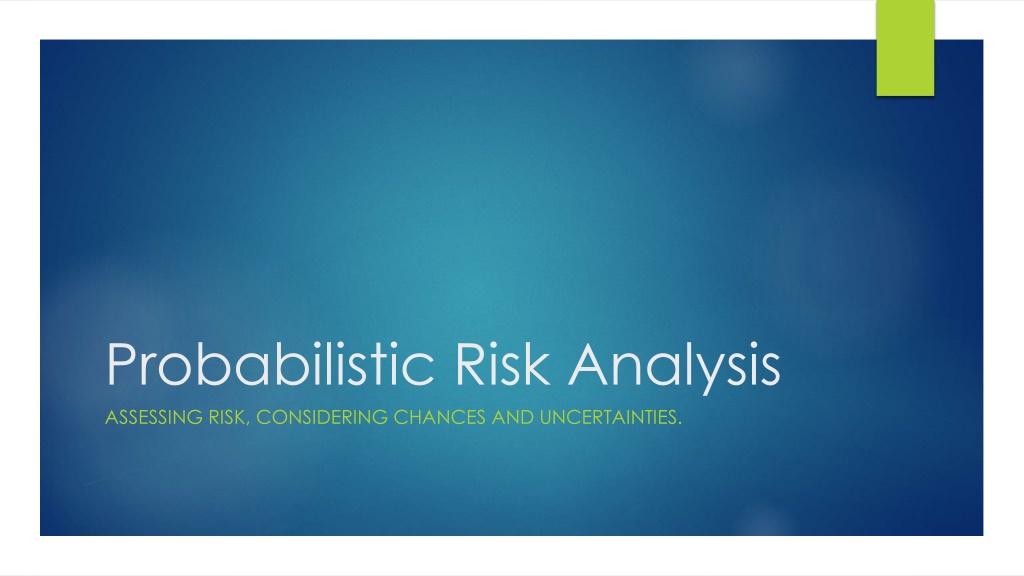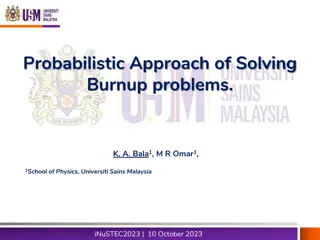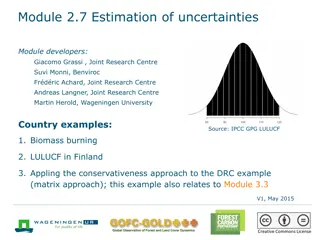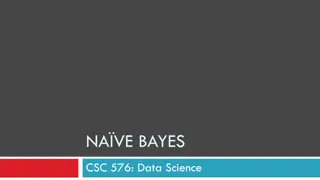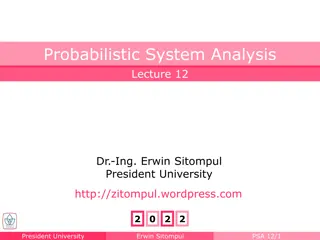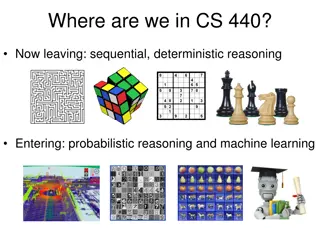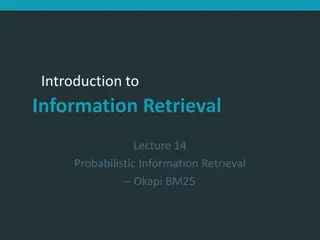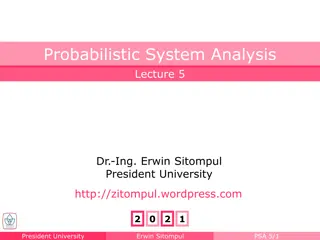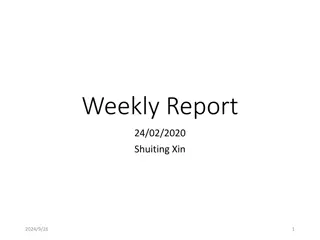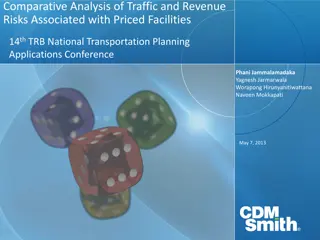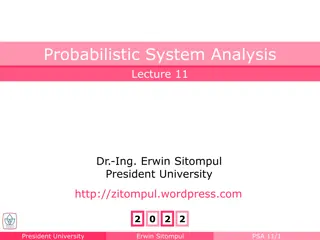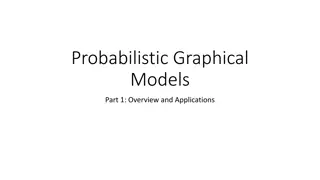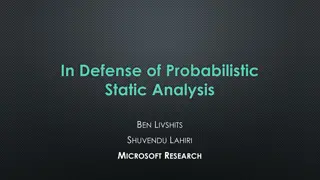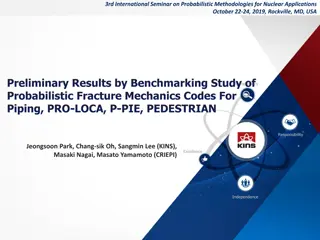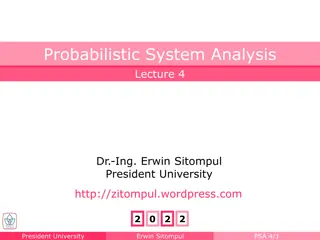Understanding Probabilistic Risk Analysis: Assessing Risk and Uncertainties
Probabilistic Risk Analysis (PRA) involves evaluating risk by considering probabilities and uncertainties. It assesses the likelihood of hazards occurring using reliable data sources. Risk is the probability of a hazard happening, which cannot be precisely determined due to uncertainties. PRA incorporates probability and uncertainty to analyze how risk varies across different segments of the population. The Flood Example illustrates how flood recurrence intervals and insurance rate maps are used to communicate and manage flood risks effectively.
Download Presentation

Please find below an Image/Link to download the presentation.
The content on the website is provided AS IS for your information and personal use only. It may not be sold, licensed, or shared on other websites without obtaining consent from the author. Download presentation by click this link. If you encounter any issues during the download, it is possible that the publisher has removed the file from their server.
E N D
Presentation Transcript
Probabilistic Risk Analysis ASSESSING RISK, CONSIDERING CHANCES AND UNCERTAINTIES.
What is Probability? A strong likelihood or chance of something (dictionary.com) The likelihood of something occurring or the chance of something happening (yourdictionary.com)
What is Uncertainty? Unpredictability; indeterminacy; indefiniteness (dictionary.com) Doubt (yourdictionary.com) Uncertainty (from limitations of data, models, or calculations) lower our confidence in our conclusions. (Environmental Protection Agency, 2014)
Risk and Probability Risk is the probability of a hazard occurring Risk cannot be exactly determined because the occurrence of a hazard is not guaranteed Risk is estimated using reliable data: historical records, population statistics, geographical surveys, etc. Probabilistic Risk Analysis/Assessment (PRA) refers to the use of probability to evaluate risk.
Risk and Probability Flood Example Flood recurrence intervals ways to communicate the probability of a flood occurring 100-year flood Myth: flood that occurs once every 100 years Reality: flood that has a 1% chance of occurring any year Same applies for 500-year (1/500 = 0.2% chance), 1000- year (1/1000 = 0.1% chance), etc. (Brown et al., 2018)
Risk and Probability Flood Example Flood Insurance Rate Maps (FIRM) Maps created by FEMA to management/mitigate floodplains and provide insurance information Information reveals which areas could be affected by heavy/frequent floods Determines insurance premiums (Federal Emergency Management Agency, 2019)
Introduction to Probabilistic Risk Analysis (PRA) Analytical approach that incorporates probability and uncertainty into risk assessment Determines how risk varies among different population segments Determines key influencers of uncertainties/variabilities (Environmental Protection Agency, 2014)
Basic PRA Methodology + Examples Methodology Examples for Application 1. Identify risky scenario 2. Understand mechanism 3. Estimate frequency 4. Determine consequences Driving through an intersection Crossing the street (jaywalking) Playing a competitive sport Breaking curfew Gambling Going outside during a storm
Benefits of PRA Provides information about the uncertainty of the data, models, scenarios, etc. used in risk assessment Estimates the degree of confidence in a decision Estimate the trade-offs in different risk management options (Environmental Protection Agency, 2014)
Why Use PRA? Identify essential risk factors and prioritize them Design controls specific to those risks Be aware of uncertainties and variable factors Optimize decision-making improve risk management (Shah, 2004)
PRA For Decision-Making Assistance Identifies weaknesses in complex systems Enables and prioritizes improvement Compare different strategies by various metrics Designed to consider any/all possible failures Could reveal hidden surprises Could provide unforeseen alternatives
Example: CAPRA CAPRA: Comprehensive Approach to Probabilistic Risk Assessment Computer application used for risk assessment/mapping Includes software modules for various specific hazards Analyzes past statistical data to simulate hazard intensities and frequencies (Cardona et al., 2012)
